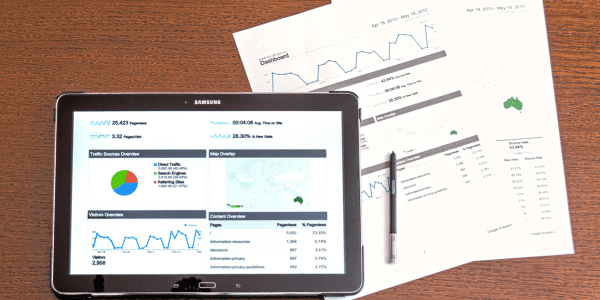In today’s digital age, businesses of all sizes must have an online presence. For small to medium-sized businesses (SMBs), one way for businesses to reach a large audience and direct traffic to their websites is by utilizing Google Ads. This comprehensive tutorial will guide you through setting up and running successful Google Ads campaigns, covering every aspect, from conducting keyword research to creating and optimizing ads.
Understanding the Power of Google Ads
Google Ads, previously known as Google AdWords, is a digital advertising platform created by Google. It enables businesses to design and display ads on Google’s search engine results pages and websites within Google’s Display Network. This platform charges advertisers based on a pay-per-click (PPC) model. This means they only pay when users click on their ads.
Small and medium-sized businesses (SMBs) can use Google Ads to compete with larger companies by displaying their products and services to people actively searching for relevant information. By implementing an effective strategy and execution, SMBs can achieve considerable returns on investment (ROI) through Google Ads.
Step-by-Step Tutorial for Google Ads Success

1. Keyword Research
Conducting keyword research is essential for a thriving Google Ads campaign. It would help if you determined the keywords that best represent your SMB’s products or services. It’s necessary to consider what phrases potential customers might type into the search bar while searching for similar offerings. By taking this important step, you can ensure that your ad campaigns are aimed at the most suitable audience, increasing the likelihood of conversion. This can lead to a more efficient and cost-effective advertising strategy. By identifying the keywords that resonate with your target market, you can personalize your ad copy and bidding strategy to reach the right audience at the right time. This, in turn, can enhance the ROI of your campaign.
To gather insights into search volume, competition, and related keywords, it is recommended to use keyword research tools such as Google’s Keyword Planner, SEMrush, or Ahrefs. Aim for a mix of broad, exact match, and long-tail keywords to address a wide range of user search intents.
2. Campaign Structure
Having a well-organized campaign structure is essential for successful management and optimization. Google Ads allows you to categorize your campaigns and create ad groups within each category that consist of related keywords and ads.
Let’s say you own a bakery that sells various baked goods.
To promote your products, you can create different advertising campaigns such as “Cakes,” “Cookies,” and “Bread.” Within the “Cakes” campaign, you can create ad groups that target specific customer needs, such as “Birthday Cakes,” “Wedding Cakes,” and more. Organizing your ads allows you to customize your marketing efforts to meet customers’ needs and track your performance more effectively.

3. Ad Creation
To grab users’ attention and motivate them to click, it’s crucial to have engaging ad copy and visuals. For each ad group, include relevant variations that showcase your SMB’s distinct selling points. Here’s a breakdown of the elements that make up a text ad:
Headline: Create a brief and captivating headline that comprises significant keywords.
Description Lines: Highlight the advantages of your products or services and remember to provide a clear call to action (CTA) to encourage activity from potential customers.
Display URL: Although it doesn’t necessarily have to be the exact URL, ensure it precisely reflects the landing page’s content.
Extensions: One way to provide extra details is by utilizing ad extensions like site links, callouts, and structured snippets.

4. Setting Bids and Budgets
When deciding on the amount to bid on keywords and how much of your campaign budget to allocate, carefully considering your options is essential. Begin by setting a daily budget that aligns with your advertising goals. Google Ads provides various bidding strategies, such as manual CPC (cost-per-click), automated bidding, and enhanced CPC. Choose a plan that fits your campaign objectives and regularly monitor its performance.

5. Landing Page Optimization
While your ads may be eye-catching, ensuring they lead potential customers to a well-optimized landing page is essential. If the page is irrelevant to the ad’s content or does not provide a smooth user experience, you risk losing potential customers. Ensure the landing page loads quickly, is mobile-friendly and has a clear call-to-action.

6. Ad Monitoring and Optimization
After setting up your ads, monitoring their performance regularly is essential. This will assist you in identifying what is functioning effectively and what requires enhancement. Google Ads offers a rich data source, including information on clicks, impressions, and click-through rates (CTR), among other things.
Compare variations of your ads with A/B testing to identify which ones perform better. Make adjustments to your bids, pause underperforming keywords, and allocate more budget to the ads that serve the best. Continuously improve your campaign using insights driven by data.

7. Quality Score Enhancement
Google utilizes a Quality Score metric to gauge the quality and relevance of your advertisements, keywords, and landing pages. A better Quality Score can result in reduced costs and improved ad placements. Several factors influence the Quality Score. This involves assessing the click-through rate, ad relevance, and landing page quality. Several factors impact the Quality Score, such as the click-through rate, ad relevance, and the landing page’s quality.
To improve your Quality Score, it’s essential to prioritize developing high-quality ads that contain relevant keywords. Optimizing your landing pages and enhancing your ad’s overall performance can also contribute to this goal.

8. Geo-Targeting and Ad Scheduling
Small and medium-sized businesses (SMBs) often aim to attract customers in specific locations and at certain times. A helpful strategy to effectively reach your intended audience is to utilize Google Ads’ geo-targeting function. This feature lets you showcase your advertisements to users in targeted geographic regions. This is especially beneficial for businesses with a physical presence, like local stores or restaurants.
Ad scheduling allows you to showcase your ads at the times and days when your desired audience is most active. To increase visibility during these peak conversion periods, it’s essential to adjust your bids accordingly.

9. Remarketing Campaigns
It’s common for users to not convert during their initial visit to a website. However, with remarketing campaigns, it’s possible to re-engage with users who have previously interacted with your site. You can increase the chances of conversion by displaying relevant ads to these users as they browse other websites or use Google’s services.
One effective strategy for remarketing is to divide your audience based on their site behavior, such as the pages they visited or items they added to their cart. Then, create personalized advertisements to remind them of the products or services they showed interest in.

10. Regular Analysis and Reporting
Tracking the effectiveness of your Google Ads campaigns requires consistent analysis and reporting. It is essential to use data from Google Ads and other analytics tools to monitor key performance indicators (KPIs), including ROI, conversion rates, and customer acquisition costs.
Generate personalized reports that offer valuable insights into the performance of distinct campaigns and ad groups. Utilize these reports to acquire valuable insights and make informed decisions on modifying your strategies for optimal results.

In Summary
In an era where online visibility can make or break a business, Google Ads levels the playing field, allowing SMBs to compete with larger enterprises globally. However, the journey continues. The digital realm is dynamic; algorithms evolve, and consumer behaviors shift. Remember to stay curious and adaptive as you embark on your Google Ads journey. Keep a watchful eye on emerging trends, regularly assess your campaign’s performance, and embrace innovation as you tailor your strategies to resonate with your audience.
Google Ads offers more than just a platform. It’s a doorway to growth and success. With the right approach, small and medium-sized businesses can use it to turn clicks into conversions and achieve their goals. This involves crafting engaging stories, data-driven insights, and precise targeting. By embracing Google Ads, businesses can confidently navigate the ever-expanding digital marketplace and come out on top.
Kyrios isn’t just a tool; it’s your key to unlocking the true potential of Google Ads. In a digital landscape where visibility is paramount, mastering Google Ads is non-negotiable. And with Kyrios by your side, you’re equipped with a game-changing ally that will revolutionize your advertising strategy.







